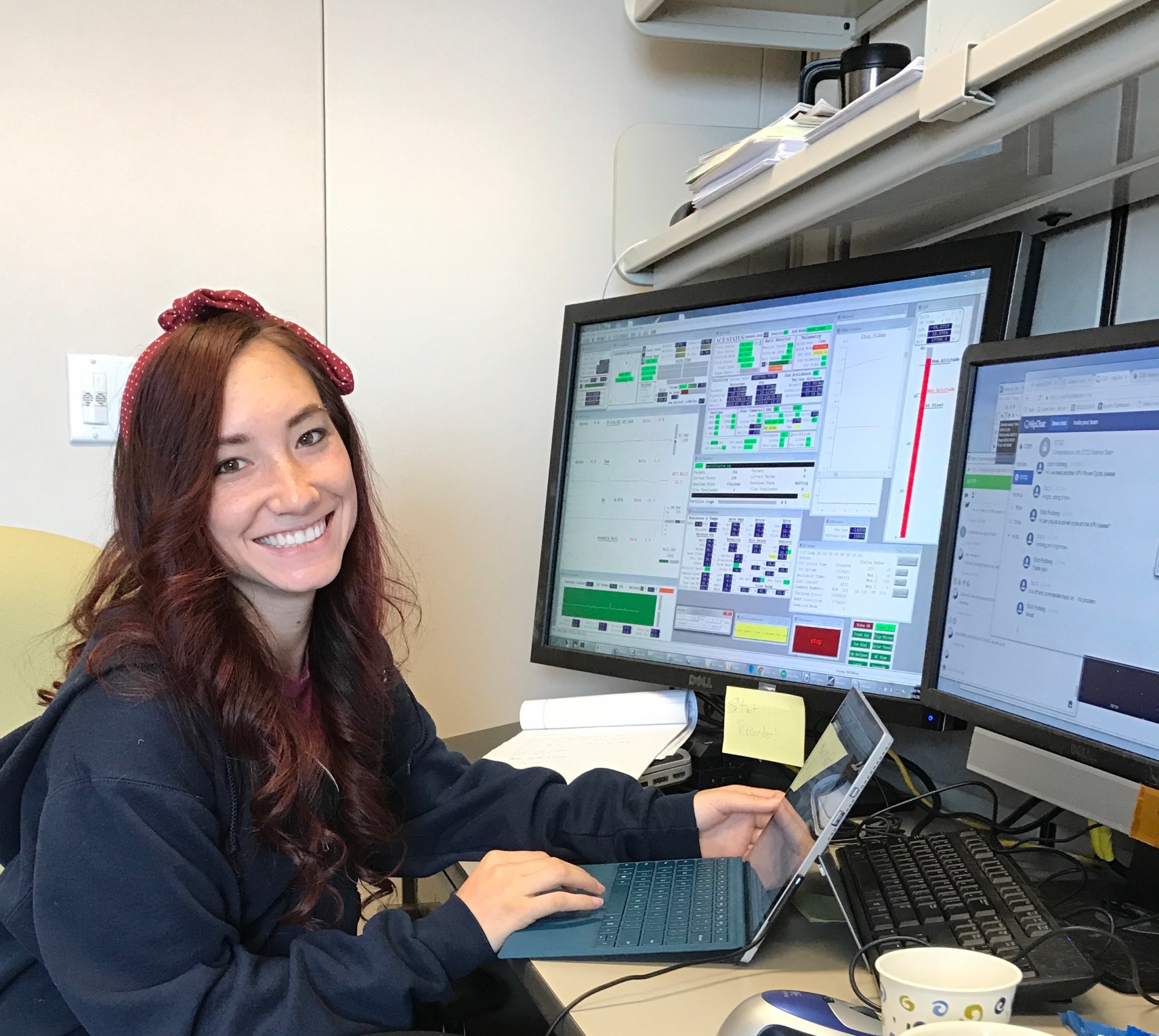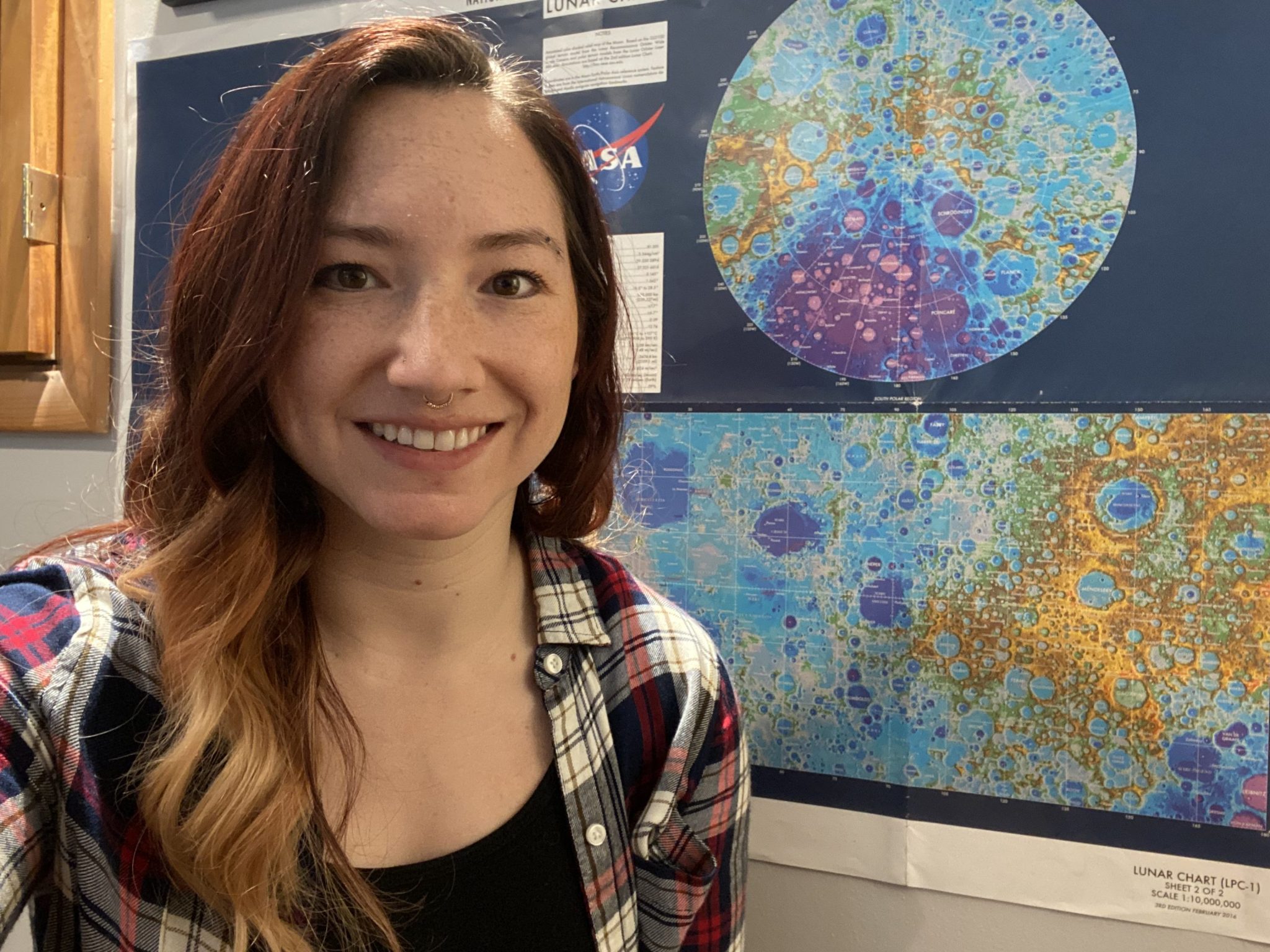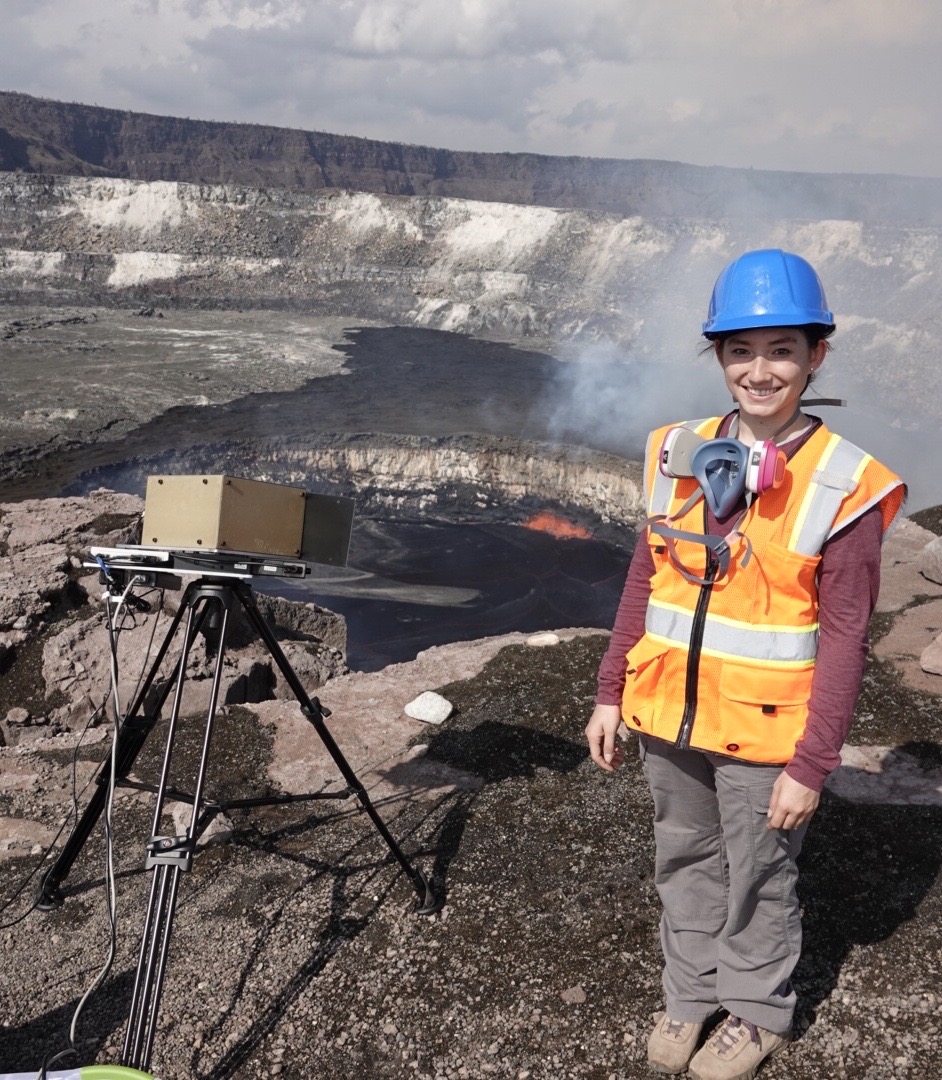Lunar scientist Casey Honniball conducts lunar observations and field work near volcanoes to investigate how astronauts could use instruments during moonwalks.
Name: Casey Honniball
Title: Lunar scientist
Organization: Planetary Geology, Geophysics, and Geochemistry Laboratory, Science Directorate (Code 698)
What do you do and what is most interesting about your role here at Goddard? How do you help support Goddard’s mission?
I study the Moon using Earth-based telescopes to understand the lunar volatile cycle. I also conduct field work at volcanic sites to investigate how astronauts can utilize instruments during moonwalks.
Why did you want to be a lunar scientist?
When I was 6 years old and in first grade, I was diagnosed with dyslexia. I was tutored and had help with homework and tests, which continued until I was a junior in high school. At that point, I learned to manage my dyslexia.
Because I was not good at reading and writing, I turned to more physical things such as things I could touch and build. I discovered physics in high school, which turned me on to other sciences.
I went to college for physics, but learned that I preferred astronomy. In graduate school I realized I wanted to be a lunar scientist.
I have a B.S. in astronomy from the University of Arizona, a master’s in geology and geophysics from the University of Hawaiʻi at Manoa, and a Ph.D. in Earth and planetary science also from the University of Hawaiʻi at Manoa.
While doing my master’s, one of my advisers introduced me to Earth-based lunar observation to look at hydration on the surface of the Moon. I found that I really liked the Moon and found my place in science.
What brought you to Goddard?
During graduate school, I worked with Goddard’s Dr. Kelsey Young on a field deployment testing instruments for astronauts. In 2020, I became a post-doctoral fellow for her at Goddard.
In January 2023, I became a visiting assistant research scientist in the Planetary Geology, Geophysics, and Geochemistry Laboratory through CRESSTII, and Kelsey is still my mentor.
As your mentor, what is the most important advice Kelsey Young has given you?
Kelsey helps me stay passionate about the work I am doing. She does this by providing new and exciting opportunities and being supportive about work-life balance.
I admire Kelsey’s spirit of adventure and her passion for field work. I appreciate all she has done for me and am grateful for the opportunities she and our lab have provided.

What sorts of instruments do you test for use on the Moon?
I test the use of mid- to long-wave infrared instruments for reconnaissance of a location prior to astronauts setting foot outside a vehicle. For example, an instrument on a rover can scan the area to characterize the minerology and volatiles including water, carbon dioxide, sulfur, methane, and similar chemicals. This then allows astronauts and scientists to select locations to collect samples.
I test this procedure on Earth by doing field work.
What is the most exciting field work you have done to test those instruments?
In 2015, I went to the Atacama Desert in Chile to install a radio camera on an existing telescope. I spent about a month installing the camera and observing on the telescope. There were only about 15 people I interacted with during that time. The area is very Martian-like; it is very red, dry, and barren, although we saw wild donkeys.
During Christmas of 2015 and again in 2016, one month each time, I went to Antarctica to launch a high-altitude balloon radio telescope. I lived at McMurdo Station and worked at their balloon facility near the airstrip. Antarctica is a completely different experience than you could imagine. You are so cut off from civilization. You have only the people who are there, although, I was there during Antarctica’s summer when McMurdo had many people. You are in a completely barren landscape that is so magnificently beautiful.
In 2018, I deployed an instrument I built to the Kīlauea Lava Lake on the Big Island of Hawaii. This is a National Park with thousands of visitors yearly. The lava lake was active at the time. We could see lava spewing out at different vent locations in the lake. It was very exciting and kind of scary. We had special permits allowing us into restricted areas closer to the lake. We were told not to get any closer to the cliff edge of the lake than our height so that if we tripped, we would not fall into the active lava.
I’d love to do field work in Iceland. Iceland is a great location for planetary field analog research as it has a similar landscape and geologic context to the Moon and Mars.
What outreach do you do that inspires others with dyslexia?
I like to talk to elementary through high school students about life as a scientist and how I got to where I am. I like to tell my story about learning to manage dyslexia to hopefully inspire others.
What do you do for fun?
I am a deep-sea scuba certified diver. I mainly dove in Hawaii because I was living there. I also enjoy working out, hiking, baking sourdough bread, and being with my family.
Where do you see yourself in five years?
I hope to be supporting Artemis science operations on the surface of Moon and continuing to studying the Moon’s surface remotely and conducting research through field deployments.
What is your “six-word memoir”? A six-word memoir describes something in just six words.
Fear is a state of mind.
Conversations With Goddard is a collection of Q&A profiles highlighting the breadth and depth of NASA’s Goddard Space Flight Center’s talented and diverse workforce. The Conversations have been published twice a month on average since May 2011. Read past editions on Goddard’s “Our People” webpage.




























